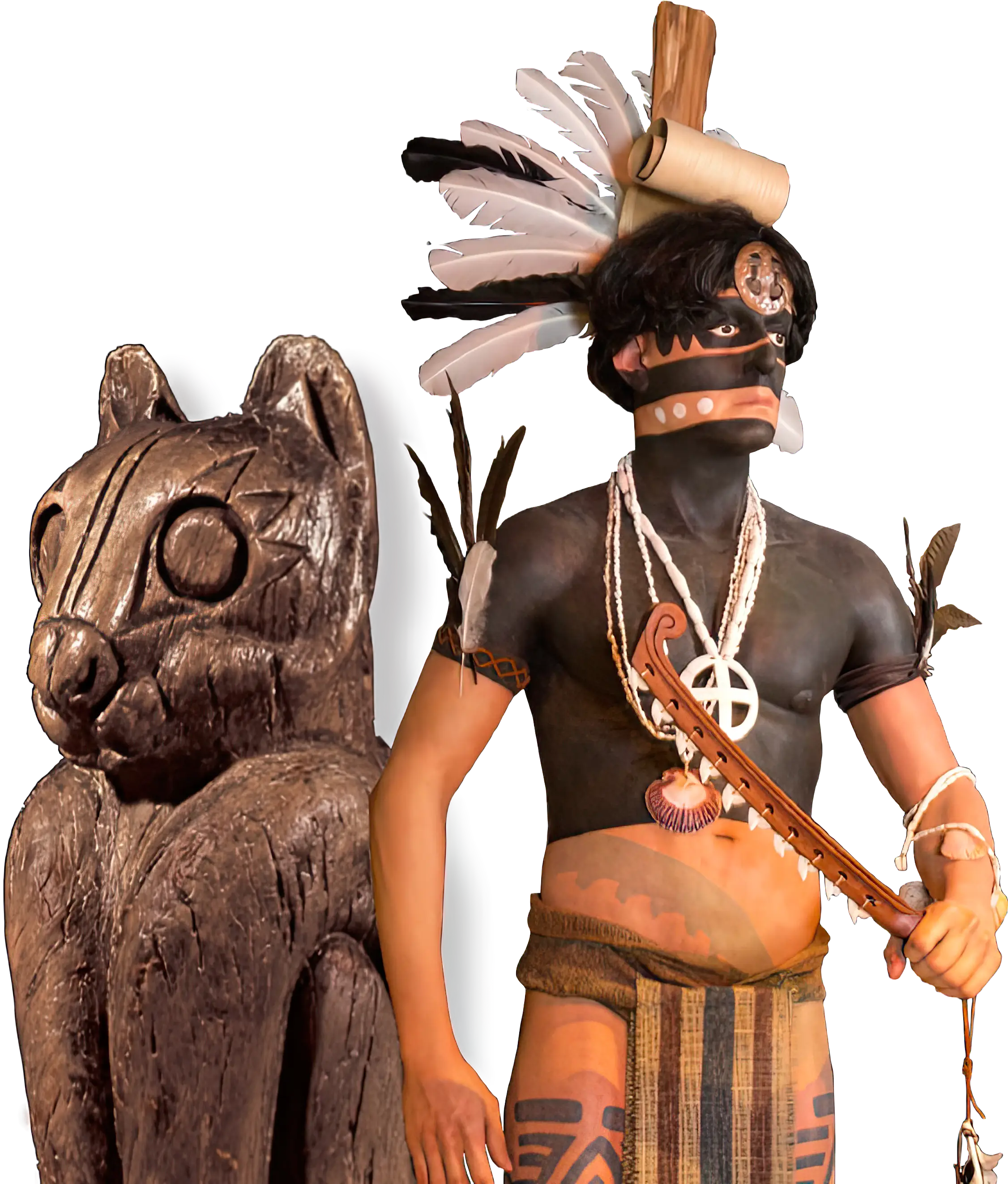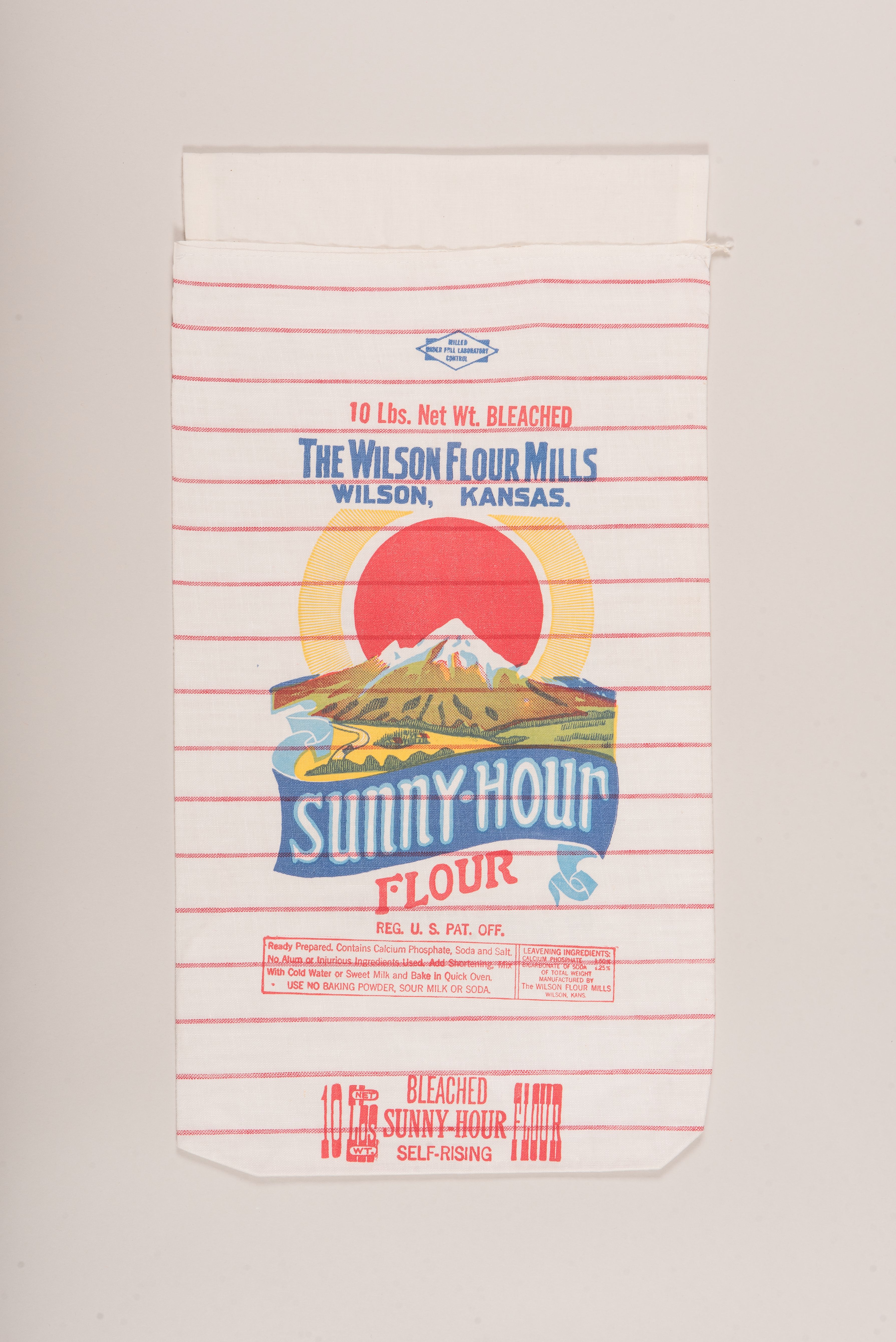This exhibition, organized by the Historic Costume and Textile Museum and the Marianna Kistler Beach Museum of Art, provides a nostalgic view into American ingenuity, sensibility, and optimism during a particularly challenging time of economic hardship and war—the period of the Great Depression and World War II. The reuse of feed, flour, and sugar sacks was a cost-saving and resource-saving approach employed by homemakers to make new items to meet their families’ needs.
In the 1920s and 1930s, manufacturers began producing patterned and colored feed sacks to give home seamstresses more options. During World War II, the federal government limited fabric use for individual garments and homemakers were obligated to use thrifty approaches to repurpose what was available to them. As fabrics from feed sacks were not considered a limited resource, women turned to them as an accessible and patriotic option during the war effort. In response, trade organizations and manufacturers promoted the thrifty use of feed sack fabric by publishing how-to brochures and booklets with clothing designs, mending instructions, and other suggestions for restyling clothes.
Thrift Style illuminates how the “upcycling” of these bags mutually benefitted twentieth-century consumers and businesses. With forty-one works from patterns to garments, it offers a snapshot of domestic life during this time, when recycling was as critical as it is today, and it provides one of the best examples of upcycling in our nation’s history.
About ExhibitsUSA
This exhibition is toured by ExhibitsUSA, the national touring exhibition program of Mid-America Arts Alliance. ExhibitsUSA sends more than 25 exhibitions on tour to over 100 small- and mid-sized communities every year. These exhibitions create access to an array of arts and humanities experiences, nurture the understanding of diverse cultures and art forms, and expand the depth and breadth of cultural life in local communities, rural and urban.
About Mid-America Arts Alliance
Mid-America Arts Alliance (M-AAA) strengthens and supports artists, cultural organizations, and communities throughout Arkansas, Kansas, Missouri, Nebraska, Oklahoma, Texas, and beyond. To learn more about M-AAA grants, programs, exhibitions, and fellowships, visit www.maaa.org.
Exhibit Photo Gallery

 Unidentified manufacturer, Feed Sack for Ellis Paramore, Delphos, KS, c. 1940; feed
sack cotton, 37 1/2 x 22 inches; Courtesy of Kansas State University Historic Costume and Textile Museum.
Unidentified manufacturer, Feed Sack for Ellis Paramore, Delphos, KS, c. 1940; feed
sack cotton, 37 1/2 x 22 inches; Courtesy of Kansas State University Historic Costume and Textile Museum.

 National Cotton Council, A Bag of Tricks for Home Sewing, 1945; paper and ink, 8
1/4 x 5 1/2 inches; Courtesy of Kansas State University Historic Costume and Textile Museum.
National Cotton Council, A Bag of Tricks for Home Sewing, 1945; paper and ink, 8
1/4 x 5 1/2 inches; Courtesy of Kansas State University Historic Costume and Textile Museum.

 Seviella Smith Frischer (1893-1969), Four Patch Quilt, c. 1930; feed sack cotton, 80 x
75 inches; Courtesy of Kansas State University Historic Costume and Textile Museum.
Seviella Smith Frischer (1893-1969), Four Patch Quilt, c. 1930; feed sack cotton, 80 x
75 inches; Courtesy of Kansas State University Historic Costume and Textile Museum.

 Seviella Smith Frischer (1893-1969), Child's Bonnet, c. 1938; feed sack cotton and bias tape, 8 1/2 x 10 inches; Courtesy of Kansas State University Historic Costume and Textile Museum.
Seviella Smith Frischer (1893-1969), Child's Bonnet, c. 1938; feed sack cotton and bias tape, 8 1/2 x 10 inches; Courtesy of Kansas State University Historic Costume and Textile Museum.

 Seviella Smith Frischer (1893-1969), Apron, c. 1940; feed sack cotton and bias tape,
37 1/2 x 28 inches; Courtesy of Kansas State University Historic Costume and Textile Museum.
Seviella Smith Frischer (1893-1969), Apron, c. 1940; feed sack cotton and bias tape,
37 1/2 x 28 inches; Courtesy of Kansas State University Historic Costume and Textile Museum.


Bringing History
& Community
Together
Become a part of preserving the rich history of our beautiful island for future generations.

MAKE HISTORY MATTER
Become a member today and help us tell the many stories of Marco Island’s history and heritage.


